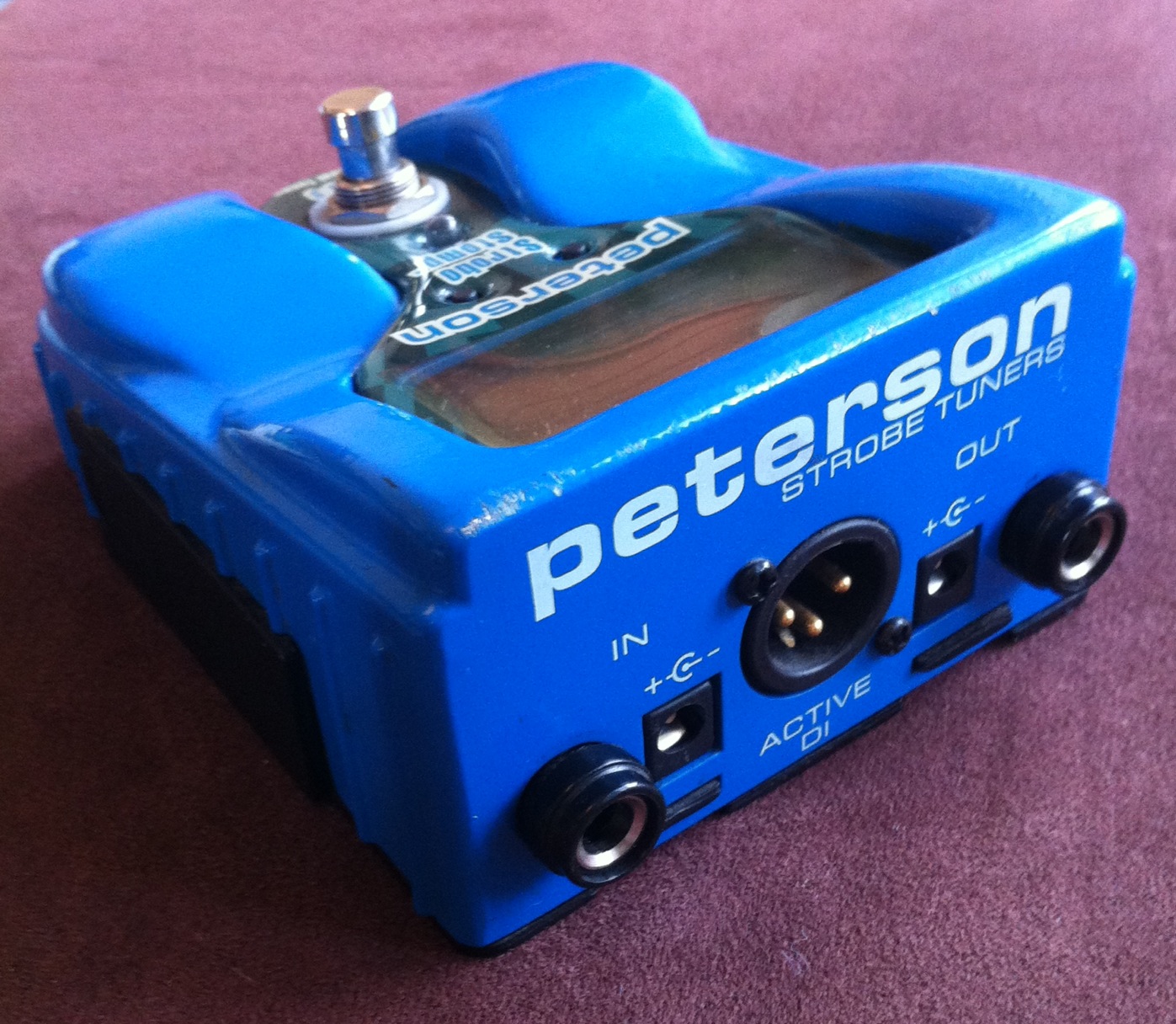


The power frequency, either 50 or 60 Hz, serves as the reference, although commercial power frequency sometimes changes slightly (a few tenths of a percent) with varying load. Many good turntables for vinyl disc records have stroboscopic patterns lit by the incoming AC power (mains). The more out of tune the played note is, the faster the pattern seems to be moving, although in reality it always spins at the same speed for a given note. If the note is out of tune then the pattern appears to be moving as the light flashing and the disc rotation are out of sync from each other. If the note being played (and making the lamps behind the disc flash) is at exactly the same frequency as the spinning of the disc, then the disc appears to be static (due to the persistence of vision) from the strobing effect. Each disc rotation speed is set to a particular frequency of the desired note. This disc rotates at a fixed specific speed, set by the user. In front of these flashing lights is a motor-driven, translucent printed disc with rings of alternating transparent and opaque sectors. As such, the lamps would flash either 110 or 440 times per second in the above examples. An ‘A’ played on the 1st string at the 5th fret vibrates at 440 Hz. For instance an ‘A’ played on a guitar’s 6th string at the 5th fret has the frequency of 110 Hz when in tune.
#Strobe tuner series
Mechanical strobe tuners have a series of lamps or LEDs powered by amplified audio from the instrument they flash (or strobe) at the same frequency as the input signal. However, the accuracy of these tuners in strobe mode, while sufficient for most tuning, is no better than in any other mode, as they use the same technique as any basic tuner to measure frequency, only displaying it in a way that imitates a strobe tuner. Other LED tuners have a ‘strobe mode’ that emulates the appearance of a strobe. Other companies, such as Sonic Research, TC Electronic, and Planet Waves, sell highly accurate LED-based true strobe tuners. The best known brand in strobe tuner technology is Peterson Tuners who in 1967 marketed their first strobe tuner, the Model 400. Anyone who had to move this tuner around was less inclined to like it because of its size and weight: two record-player-sized cases of 30-40 pounds each. Wind instrument repair people liked this tuner because it needed no adjustment to show different notes. (The other discs were all gear-driven off of this one.) Incoming audio was amplified to feed a long neon tube common to all 12 discs. When set at A 4 = 440 Hz the tuning fork produced a 55 Hz signal, which drove the four-pole 1650 RPM synchronous motor to which the A disc was mounted. These weights permitted setting it to different reference frequencies (such as A 4 = 435 Hz), although over a relatively narrow range, perhaps a whole tone. The fork had sliding weights, an adjustment knob, and a dial to show the position of the weights. This tuner had an electrically driven temperature-compensated tuning fork the electrical output of this fork was amplified to run the motor.

The gearing between discs was a very close approximation to the 12th root of two ratio. They had 12 strobe discs, driven by one motor. However, these strobes are now mainly collector pieces. The first strobe tuner dates back to 1936 and was originally made by the Conn company it was called the Stroboconn and was produced for approximately 40 years. The strobe tuner detects the pitch either from a TRS input jack or a built-in or external microphone connected to the tuner. The accuracy of the tuner is only limited by the internal frequency generator. Even the slightest difference between the two shows up as a rotating motion in the strobe display. A strobe tuner shows the difference between a reference frequency and the musical note being played. There are three types of strobe tuners: the mechanical rotating disk strobe tuner, an LED array strobe in place of the rotating disk, and “virtual strobe” tuners with LCDs or ones that work on personal computers. Strobe tuners (the popular term for stroboscopic tuners) are the most accurate type of tuner.


 0 kommentar(er)
0 kommentar(er)
